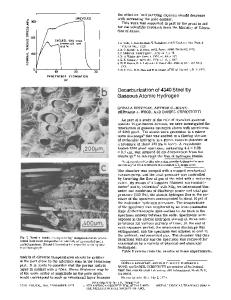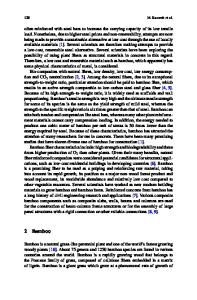Ceramic Coatings for Fiber Matrix Composites: Titania Thin Films on Bismaleimide-glass Fiber Composites
- PDF / 1,083,361 Bytes
- 9 Pages / 612 x 792 pts (letter) Page_size
- 10 Downloads / 362 Views
Bismaleimide polymer composites were coated with adherent, uniform, crack-free, titania films. Selective deposition of either crystalline (anatase) or amorphous films was achieved as a function of deposition conditions. Films are deposited under near ambient conditions from aqueous solution and thus can be adapted to any sample geometry and still provide complete coating of the polymer composite substrate. They can be obtained crack-free in thicknesses up to 0.5 m by using drying procedures that combine temperature and humidity control.
I. INTRODUCTION
Polymer matrix composite materials are increasingly important structural materials in various weight-sensitive applications as lightweight, easily fabricated replacements for metal components. Bismaleimide (BMI) resins are a class of high-temperature thermosetting additiontype polyimides widely used as reinforced matrix resins for advanced composites in the electronic and aerospace industries. BMI-based materials provide a unique combination of high service temperature, the ability to be processed, and good mechanical properties.1 BMI composites also have significant performance limitations. Polymer–matrix composites evidence significant degradation when exposed to oxidizing atmospheres at temperatures >300 °C. Surface oxidation leads to weight loss and mechanical failure. An approach to increasing the resistance of these materials to high temperatures and oxidizing atmospheres is the use of inorganic coatings that physically block the interaction of oxygen and oxy-radicals with the polymer. Progress in the application of ceramic thin-film coatings has included advances in film deposition technology involving chemical vapor deposition, sputtering, laser ablation, and evaporation.2 These techniques, however, have significant shortcomings. Capital equipment costs can be prohibitively high. The most common techniques still involve line-of-sight deposition, making them applicable only to simple surfaces and shapes. Most importantly, elevated temperature is usually required to convert the as-deposited material into crystalline films. Sol-gel
a)
Address all correspondence to this author. e-mail: [email protected] DOI: 10.1557/JMR.2005.0318 2544
http://journals.cambridge.org
J. Mater. Res., Vol. 20, No. 9, Sep 2005 Downloaded: 15 Mar 2015
techniques, which have also undergone extensive development in the last three decades, often have similar hightemperature requirements. These significantly limit existing film-synthesis technologies, especially for polymeric substrates.3 A recent example of such a coating is the formation of silica on BMI using sol-gel technology.4 An alternative strategy for the preparation of ceramic films is liquid phase deposition (LPD). LPD is an aqueous technique for depositing oxide films, which has been widely used for SiO25 but is being used increasingly to form films of other oxides such as TiO2.6,7 The distinguishing characteristic of LPD is the use of a solution of metal-fluoride complexes whose hydrolysis in water is modulated by a
Data Loading...










